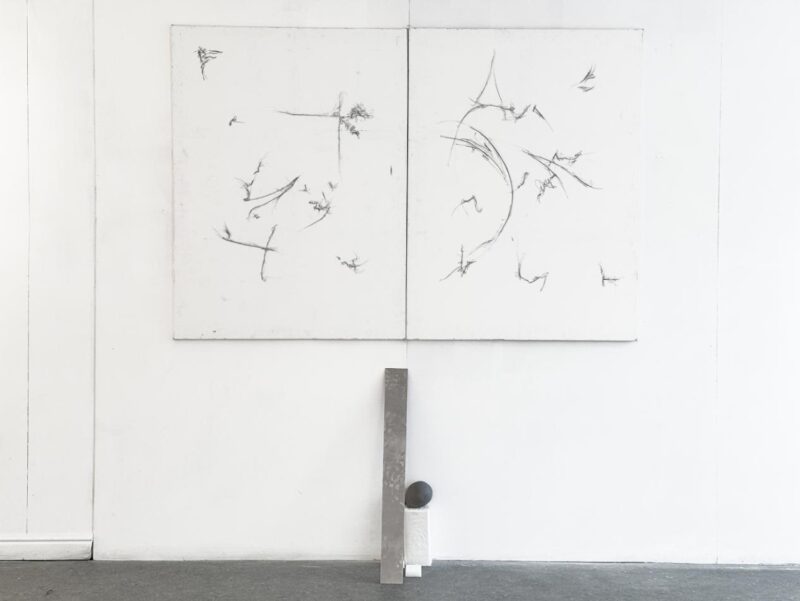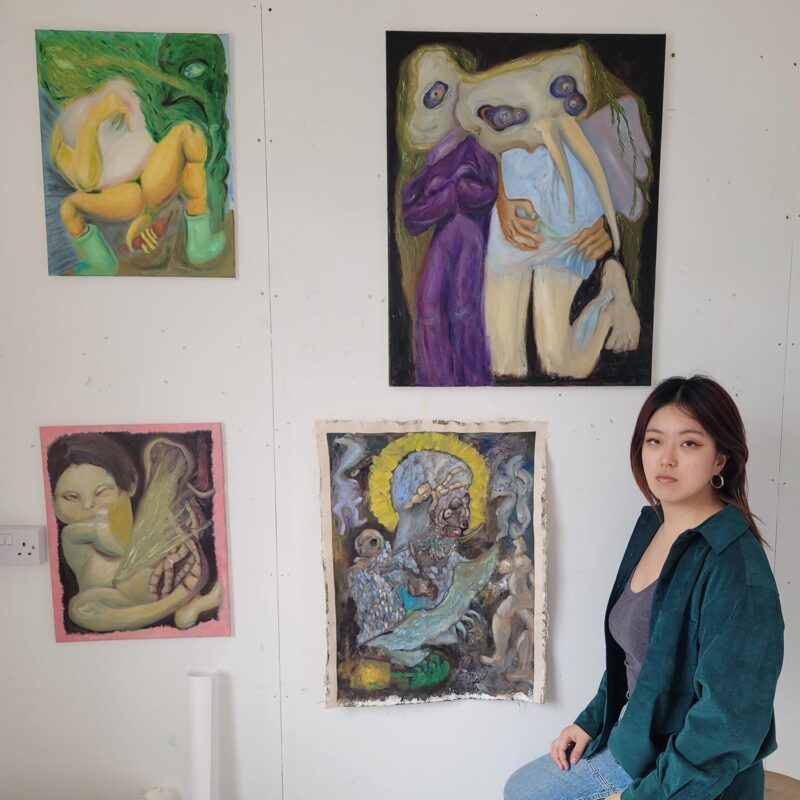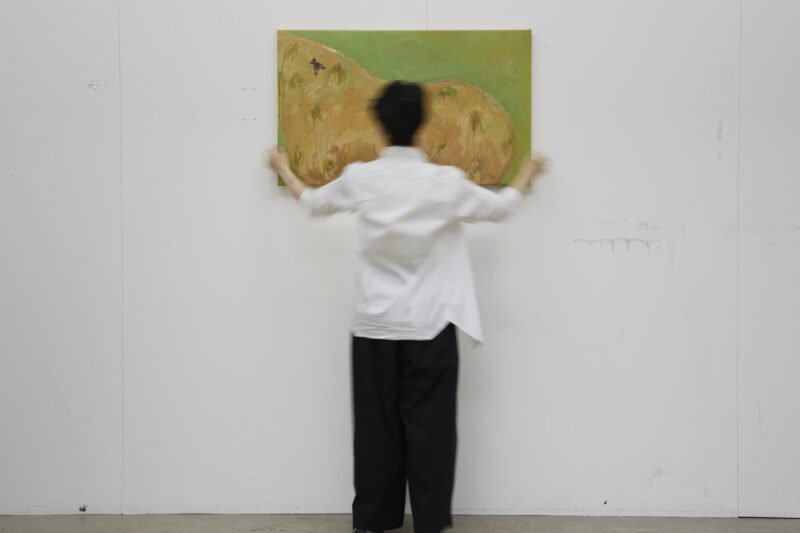Matilda Sutton talks to Mark Westall- Ahead of her first solo exhibition at Pipeline Contemporary and a presentation of her work at London Art Fair, I managed to ask a few questions of up & coming artist Matilda Sutton.
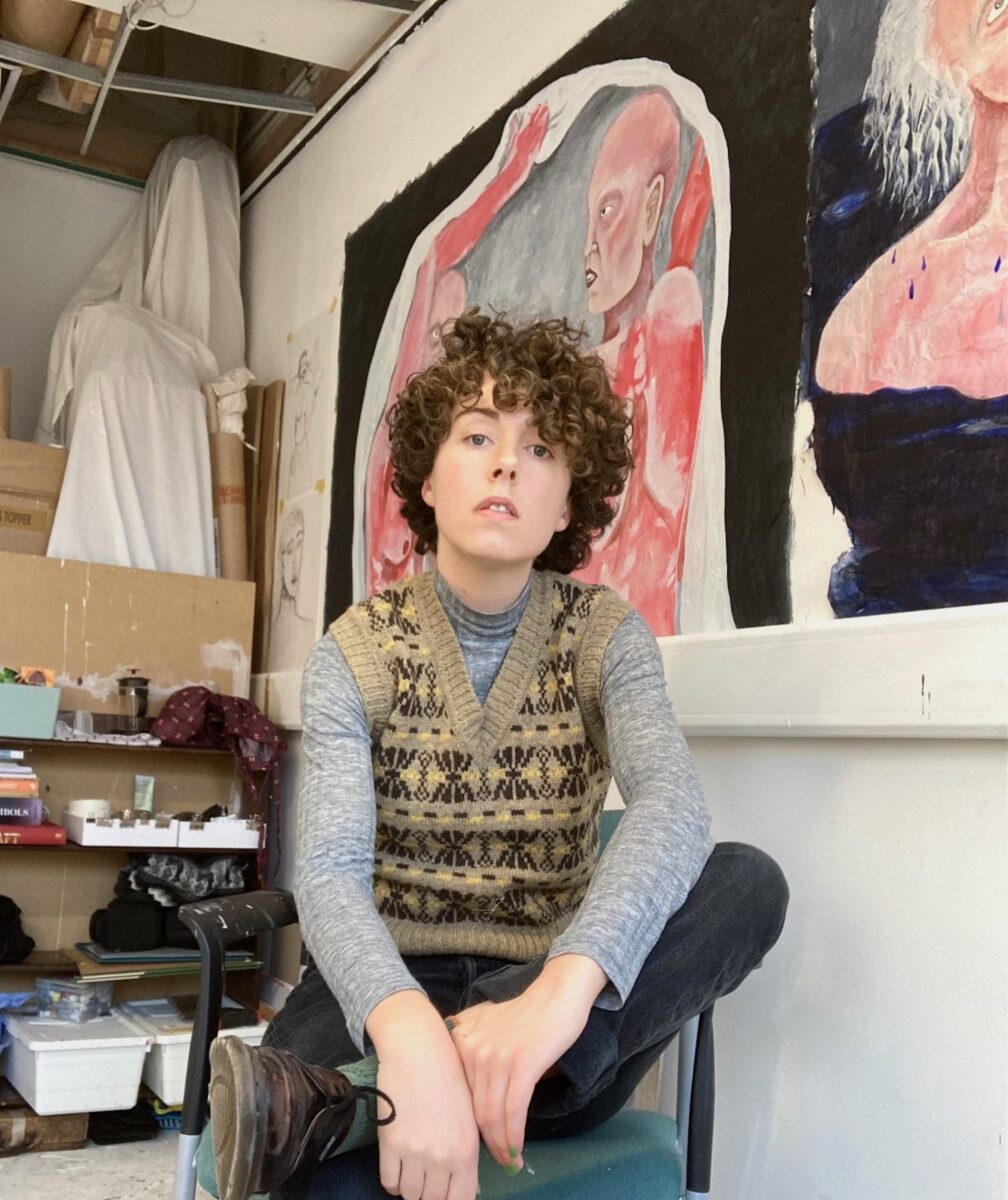
So the most obvious question would be who are these hairy people in your work – what do they represent – do they have lives outside of the snapshots you create?
In some ways now, the hairy people in my work have become like actors or players, they are like these friends or characters which I can employ to interrogate the different ideas i’m interested in as they change over time. But they certainly came from a specific place of wanting to represent a form of humanity framed within being an animal. Sometimes people will refer to them as ‘hybrids’ which makes sense, but in a way I think I always saw them as people but a visual representation of humanity as part of a wider animal world. It was about placing the human back into that context. There is a strong relationship to gender as well – if not a straightforward one. I used to describe them as my ‘hairy ladies’ but they have a quite fluid, and shifting relationship with gender, one that is playful I hope.
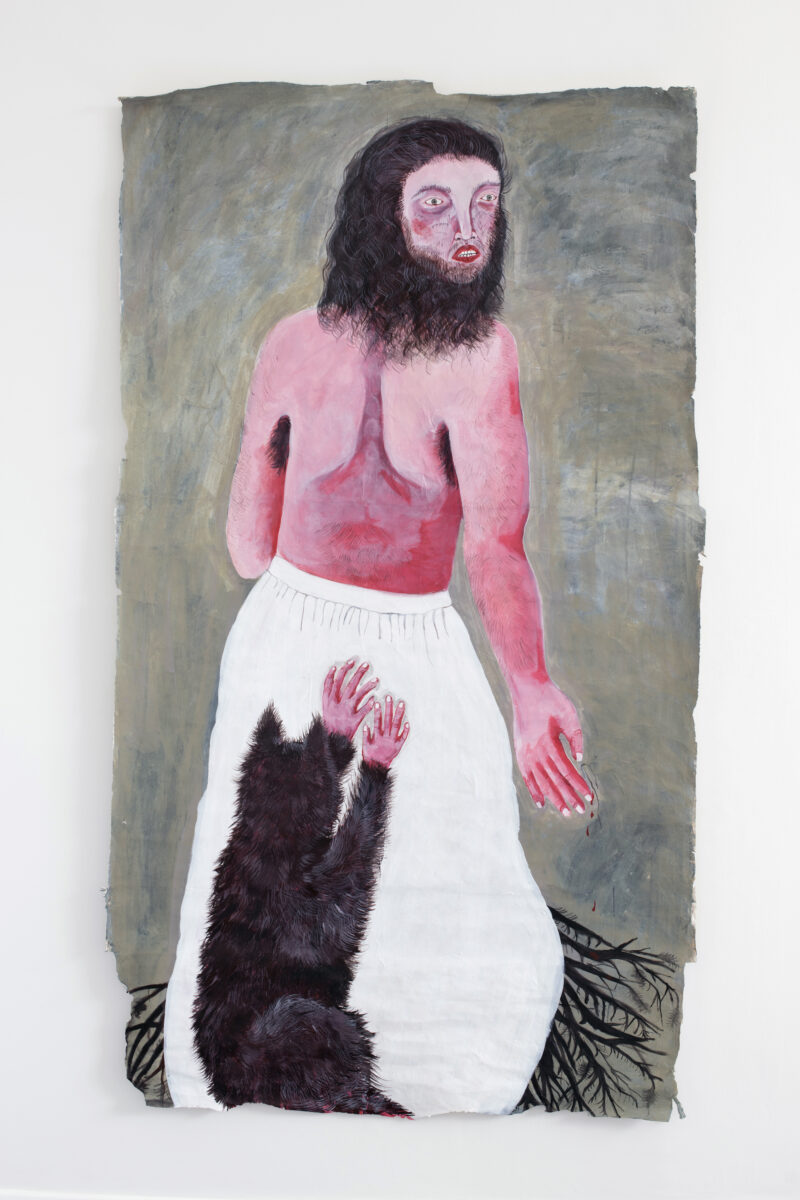
Some of your work looks like it looks back to a time of beginning to the origins of humanity but you say your practice is interested in posthumanist philosophy – is it good to look back to look forward?
In a way, I think this thing of them looking like origins of humanity or early humans is incidental. Similarly, I’m interested in post-humanist philosophy, but this isn’t really a futuristic thing either. The fact that the figures have fur, are naked and not having complete outfits or recognisable human hairstyles was initially to do with anonymising them somewhat. I always wanted to avoid anything that put the figures in any fixed place or time – so they’re not in the past or the future – or really a recognisable present. It was a stripping away of some cultural specifics (although of course this isn’t entirely possible and the figures very much draw from my own lived experience of physicality and being in a body), but this was in order to talk about broader elemental ideas of human-ness, animal-ness, culture and nature.
I suppose in the same way archetypal narratives, myth and folklore have this timeless feeling. That’s certainly an area where I’d say there is use in looking back (or around), to folklore and shared human narratives, the knowledge embedded in our stories. It seems there are a lot of artists (and others) interested in that right now, as people are with posthumanist ideas. I think this speaks to a shared feeling that there is a need for a different kind of connection with other living beings, our environment and each other than what we have now. And though we can’t romanticise the past, it’s probably also true that there
were ways of living and relating to non-human life which may have had more balance in different times. It’s also essential that we look to history to understand how our current ways of thinking have come to be – so that we can understand them not to be inevitable or natural – particularly in the case of gender, race, sexuality, class and so on. All the ways we categorise humans and others, we need to understand the hows and whys those categories were invented, and that they were constructed and are not a given.
Can you tell us about some of the work that Vane will be exhibiting at London Art Fair 2024
Vane are presenting a selection of pieces that I made as part of a body of work earlier this year and were shown in the conjoined shows I had at Vane and Clifford Chance law firm in Newcastle upon Tyne for their 2023 Pride Art Exhibition. There are a few paintings, selected ink and pencil drawings and one of the series of cloth and mixed media sculptures I refer to as my ‘Poppets’. This body of work was a way of thinking about how we conceive of the edges of our bodies and ‘selves’. In the two paintings ‘spitting pips’ and ‘returning’ the figures are eating fruit in kind of lush outdoor settings. They’re dealing with the act of eating as a time where the edge of ourselves meeting the outside world is felt and then confused – I like the idea of the mouth as a site where we start to meld with our environments, where we join with all the stuff that isn’t ‘us’
You are based in Newcastle do you feel that is a positive or negative for the ‘success’ of your practice also for you what is success?
The question of what success is – is a really interesting one, I think you have to ask yourself that all the time, especially as an artist. For me, I want to define success as maintaining an engaged practice, where I make regularly, am excited about what I’m making, and get to communicate with others about it at least some of the time. To have that, a practice that is with you for life, and just have a base level of security at the same time would be the ultimate success. It shouldn’t be, but that’s a pretty tricky thing for most people to achieve.
I love Newcastle, it’s a beautiful city with so much going on and such a strong identity, I can’t see it as anything but positive for my career and life more broadly. The artworld, as much else, seems very London-centric at times, but frankly, I think folks are missing out. It’s hard for me to compare really, because I studied in Newcastle and lived there and made my practice there ever since. But my experience of being an artist here is overwhelmingly positive. There’s a lot of people doing good work; individual practitioners, galleries, collectives alike. So there’s not only interesting work being made but a lot of people working hard to make exciting things happen in the art scene. I’ve found it to be supportive and encouraging as an emerging artist and I also love how organisers and artists are committed to being a part of the wider community of the north-east beyond just the arts. I feel I owe a lot to organisations like Vane and also like The NewBridge Project where I am a studio member, for the start I’ve had in my career. They are committed to supporting local practitioners whilst also engaging with an international arts ecosystem. That’s a really exciting thing to be a part of and I’m really grateful for this and the community I have.
You mention on your site – that you are at a point of change in your practice – does that mean you will be leaving behind your hairy people?
Sometimes I wonder if I should force myself not to work with my hairy people for a while, but I usually find that they creep back in whatever I do. I think they have a lot more to say or I have a lot more left to talk to them about… But certainly, I’m more and more bringing in other forms and figures. I want to spend a bit of time being very experimental again. In the three-dimensional work I’ve made they are less typical to the hairy figures in the paintings, and find their own way to different forms. I find I make in a really different way when I’m working on objects, the material has its own demands in a way that feels quite different from when I paint and draw.
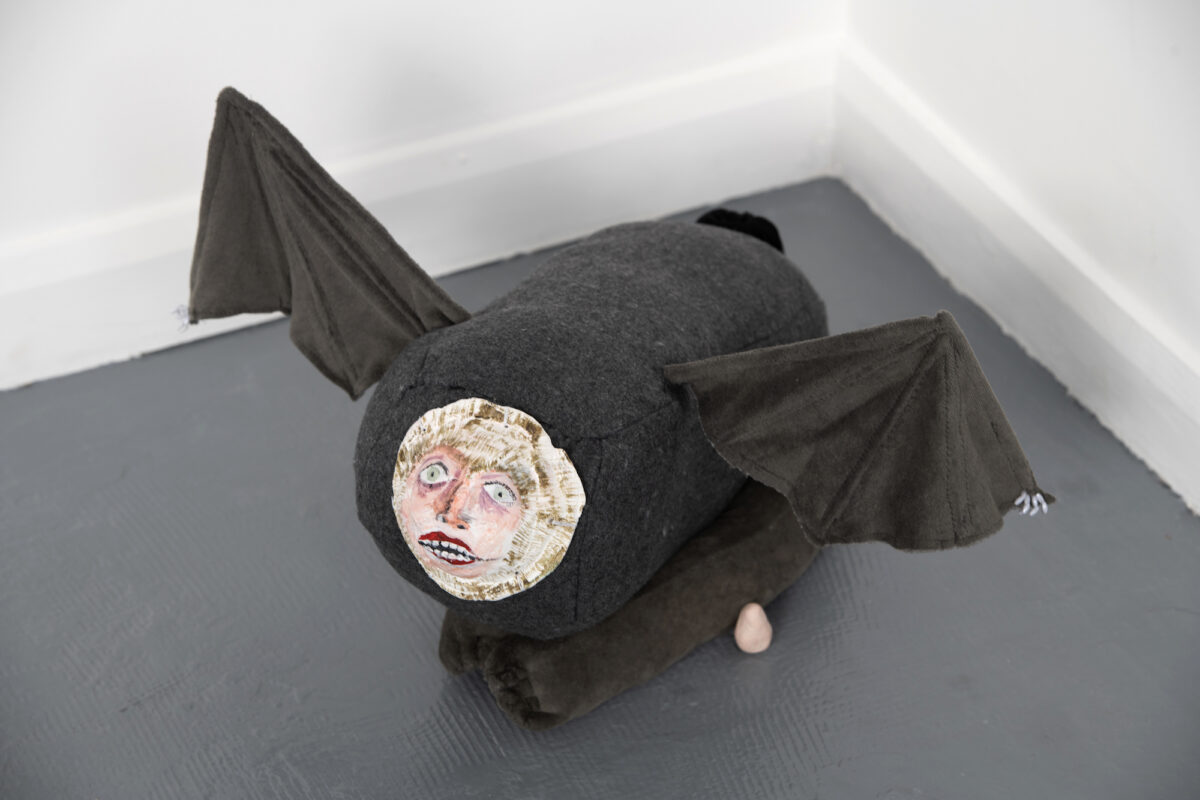
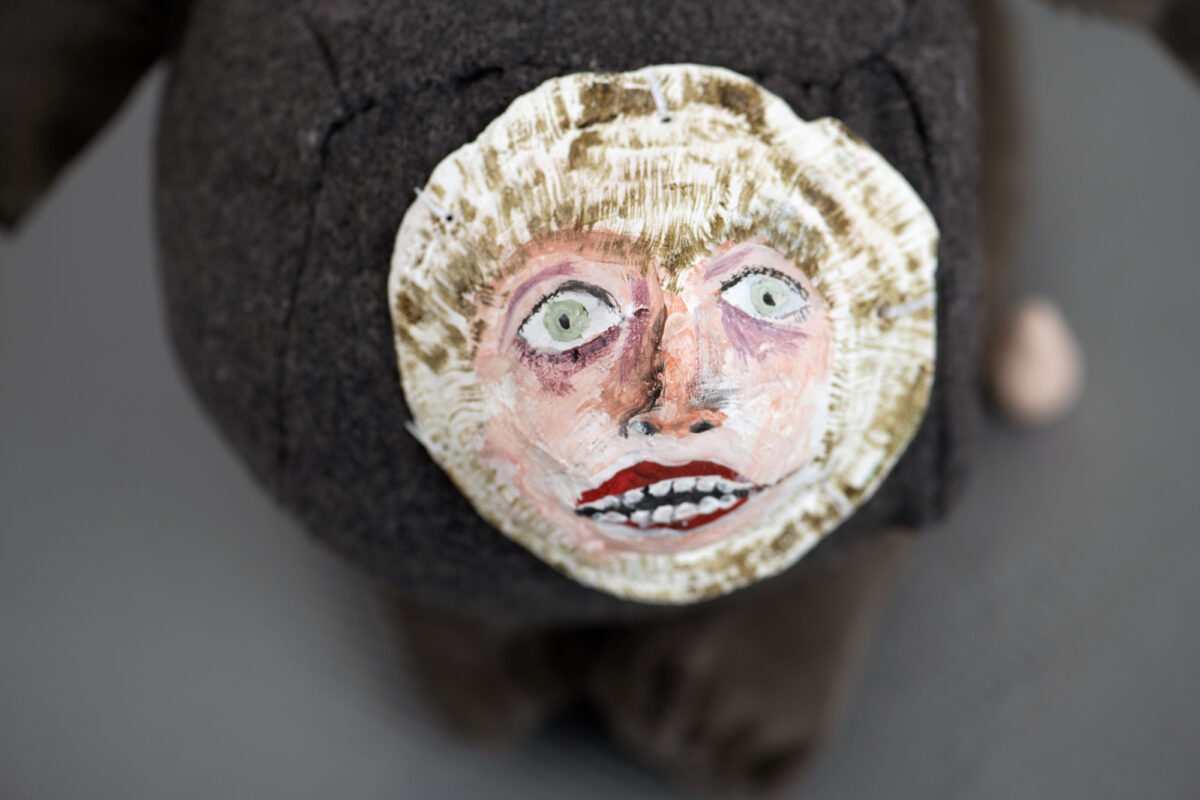
Working with cloth and clay and papier mache or plaster, and particularly fusing these elements together is very generative and exciting at the moment. I am more and more trying to bring these sculptural pieces into conversation with the 2D work. I am intrigued by what will happen between the two and how they can influence each other. This is something I’m excited to dedicate some time and development to, but I don’t think my hairy friends are leaving me completely.
It must be great to starting a new year with some work being exhibited at London Art Fair how is the rest of the year panning out?
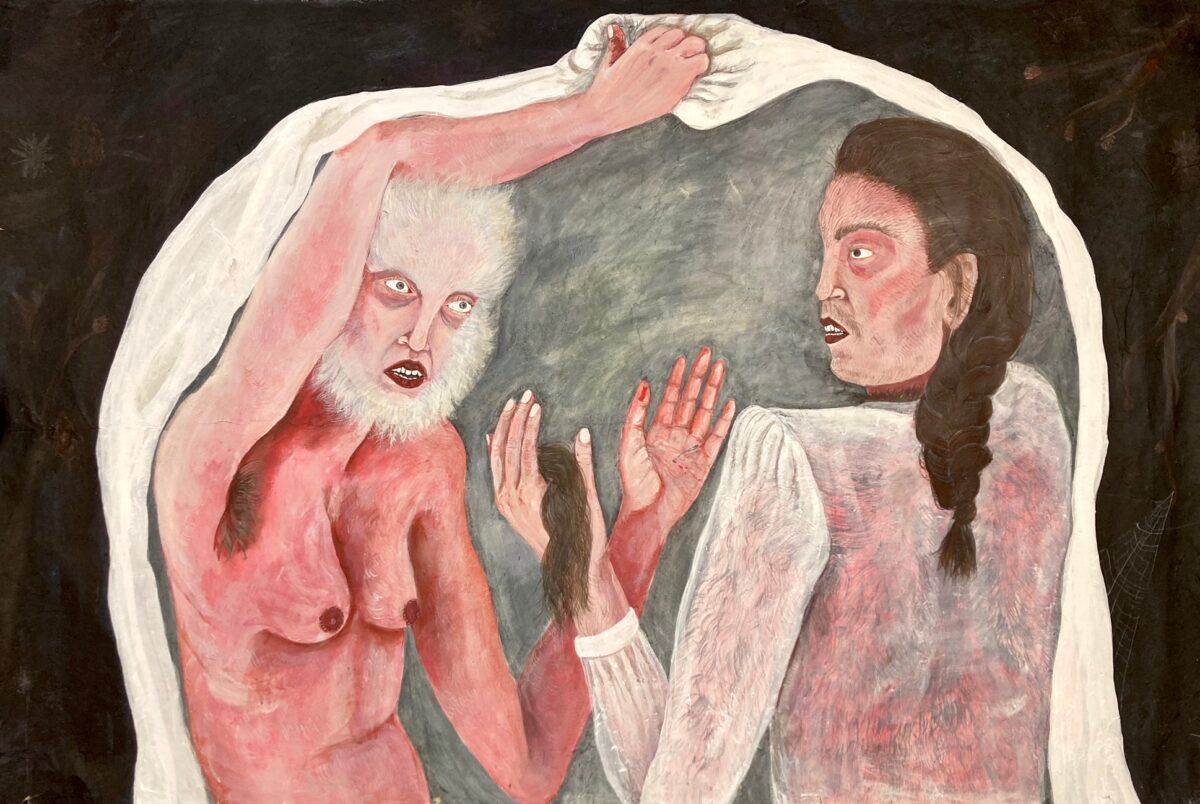
It’s such an exciting start to the year absolutely! The other really exciting happening right now is my solo show at Pipeline Contemporary in Fitzrovia – my first with the gallery. Pipeline are a really exciting new gallery with a fantastic programme that I’m so glad to be included in. The show is called ‘Bristling’ and it’s on now until 24th February. It takes this exploration of the boundaries of self and body and moves it on into thinking about how our edges are defined in relation to others. As for the rest of the year, I’m keen to get straight back into the studio & get on to some new work I’ve been planning, but I’m also hoping to get out of the studio and conduct some research through travel and residency(ies) if possible!
You can see Matilda Sutton at London Art Fair presented by Vane, Stand E2, 16th – 21st January book tickets HERE get 20% discount with code: FAD20
And at Pipeline Gallery with her solo exhibition bristling on until 24th February.
